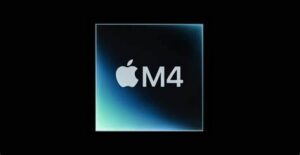No glassholes please, we are Apple.
- Details of Apple’s rumoured augmented reality offering has leaked and it looks like Apple has taken a practical approach that could result in a product with limited function but one that aficionados might buy.
- This product has been rumoured for some time and was expected to follow a virtual reality product but of the VR version, there is no sign.
- The main features of the leaked details are:
- First and foremost: The product will be no bigger than a regular pair of spectacles.
- I have long believed that this is a crucial element for any AR products that the consumer is going to pay money for.
- Second, compute: All of the computation will be done on a companion iPhone device.
- This makes complete sense because this is how the spectacle size can be achieved and also have acceptable battery life.
- The iPhone is a highly capable compute platform with world-beating battery life in the latest generation that most users will have with them anyway.
- This makes it a very good solution to the problem of size and weight for AR.
- One potential issue is the image transfer from the iPhone to the display (glasses) where Bluetooth may not have enough bandwidth to carry the signal.
- Hence, some kind of proprietary bookended radio solution may be required to make this work well.
- Third, Price: The mooted price is $499 which is well below where other AR offerings are currently priced which may make it acceptable to a larger range of iOS ecosystem members.
- Fourth, LIDAR: The main sensor in the AR unit is expected to be LIDAR based rather than a camera which caused widespread derision for Google and the failure of its Google Glass device in 2013.
- Apple already has a miniature version of this in the new iPad Pro and it will almost certainly be used to capture a map of 3D map where the user is which is crucial to being able to overlay convincing digital content on top.
- Fifth display: Apple intends to have a display for each eye (which will work with prescriptions) which enable some stereoscopic 3D effects to be created but I doubt that they will be full-frame.
- In order to create convincing 3D AR content, I have long believed that the display needs to be full-frame and not letterboxed as it is in all AR offering available today.
- Some of the Chinese players like Nreal have made good progress on this front, but there is still some distance to go.
- This limitation can be addressed by not being too ambitious with content and sticking to simple useful functionalities.
- These would include directions while driving or cycling or instructions lists or videos while engaged on tasks that involve two hands.
- Apple has a reputation for a user experience that is both good and easy to use and if this is not met, the device will never be launched.
- Hence, I suspect that Apple has made a lot of the right choices given the limitations of what is possible today resulting in a device that won’t overpromise and will deliver on its expectations.
- There is clear launch time for his product and given that it won’t be ready for a while and the current pandemic, this could be pushed out to 2021 or beyond.
- Apple has learned a lot from the failure of its peers looks to me to be on the right track with this product.
- However, I can’t really say the same for the share price which, along with the rest of the market, looks very punchy on a 2020 PER of 24x when serving a market that will fall by 10-20% in the coming 12 months.









